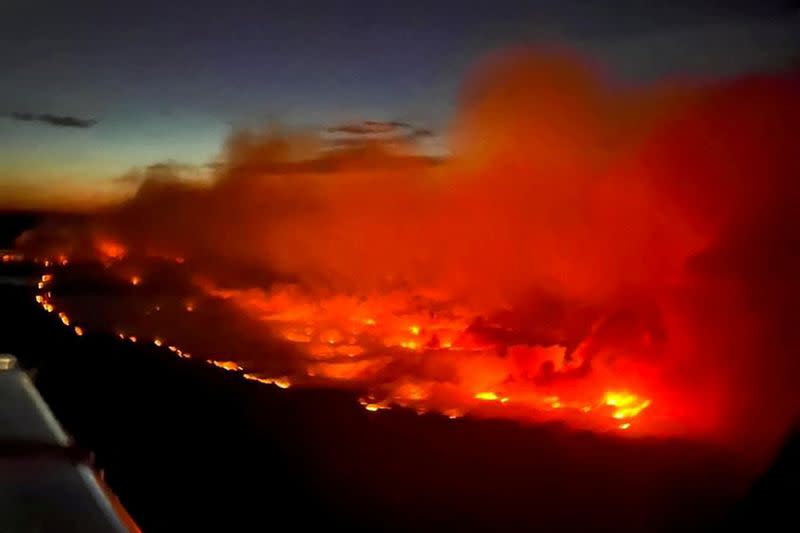Summer wildfires remain a risk in Canada after milder start to season

OTTAWA (Reuters) - Canada is likely to see more wildfire activity than normal in June and July, especially in drought-hit western regions, as weather forecasters predict a warmer and drier summer, government officials said on Wednesday.
After its worst-ever year of wildfires in 2023, Canada has so far had a milder season this year, with rain in recent weeks bringing relief to a large portion of the west.
"The good news is that the number of fires is well below average for this time of the year ... That being said, multiple regions are at an elevated risk due to a combination of hot, dry and windy conditions," Emergency Preparedness Minister Harjit Sajjan told reporters.
Sajjan said there were 69 blazes currently active in the country and about 500,000 hectares of land had burned in 2024. Last year, more than 6,600 fires scorched 15 million hectares, an area roughly seven times the annual average.
The wildfire risk is expected to remain high over coming months, particularly in regions experiencing intense drought, including northwestern Alberta, northeastern British Columbia, and southern Northwest Territories, government officials said.
Out-of-control forest fires in British Columbia and Alberta forced large-scale evacuations earlier this year, although cooler weather in late May and early June helped dampen down fire activity in recent weeks.
(Reporting by Ismail Shakil, editing by David Ljunggren and David Gregorio)


